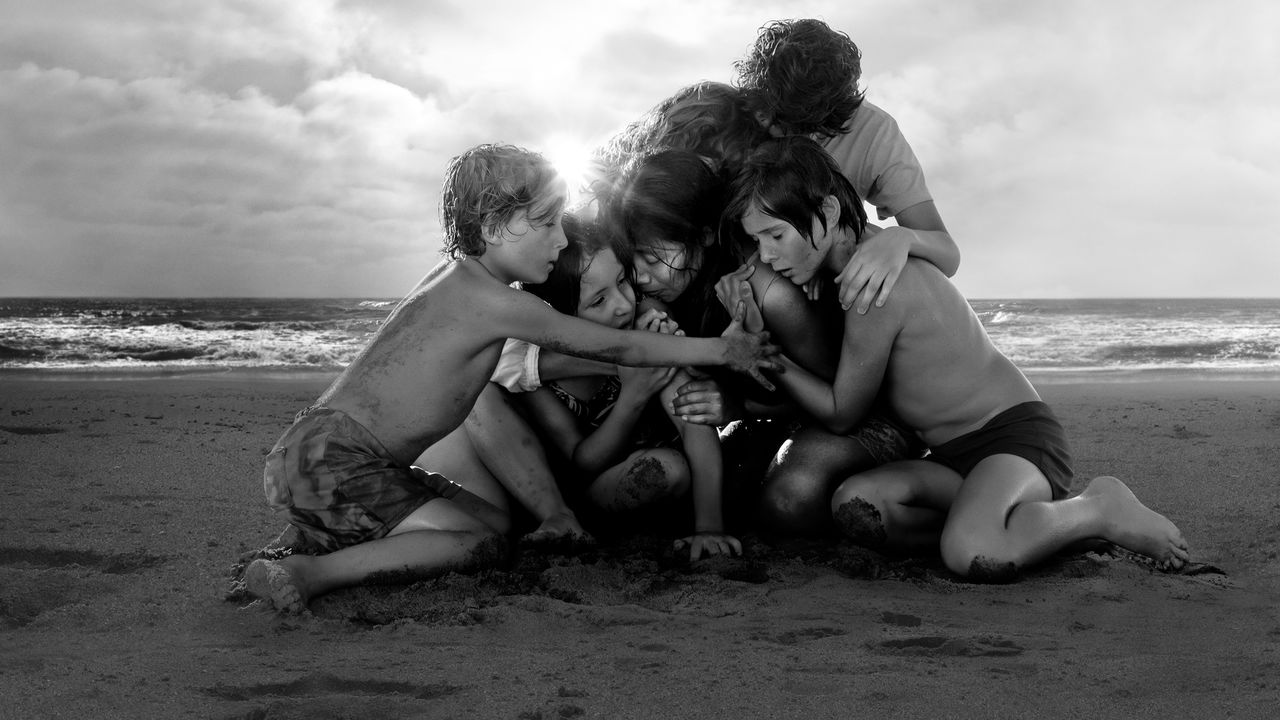Roma: An Altar For Libo
Winner, this past Sunday, of the Oscars for Best Cinematography and Best Foreign Language Film, Roma was written and directed by Alfonso Cuarón, who also won the Oscar for Best Director. It had a limited theatrical release in the United States in November of 2018. Within a month later, it started streaming on Netflix.
Shot in black-and-white, Roma is a film that recreates Cuarón’s childhood in Mexico. It is called Roma as an allusion to the name of the Mexico City neighborhood that Cuarón grew up in, Colonia Roma. But even though the movie is centered on Cuarón’s childhood, it is not, however, about Cuarón. You could say that Roma is autobiographical in style, but not entirely in substance.
Roma spotlights the life of Cleo, the live-in maid and nanny of an upper middle class family in seventies’ Mexico. The movie honors Liboria “Libo” Rodriguez, Cuarón’s real life nanny, who helped raise him since he was a baby, and who Cuarón considers to be family. Cleo (played by first-time actress Yalitza Aparicio), just like Libo, is an indigenous woman, and the family she works for, just like Cuarón’s, is white. The screenplay is based on Cuarón’s own recollections of real events from his childhood, and on conversations he had with Libo, whom Cleo is meant to be a portrayal of.
More than 3,000 women auditioned to play the part of Cleo. The auditioning process required them to answer personal questions rather than reading parts of the script. In an article on USA Today, on the topic of casting for Cleo, Cuarón is quoted as saying “I was just interested in hearing them talking, like, who you are, what do you like, what are your dreams. When I saw (Aparicio), I was like, ‘Wow, she’s so perfect.’ She has an amazing softness combined with an amazing smile, but what is behind all of that stuff is an immense intelligence.” So, from the start, there was an uncompromising approach to the making of this film. Cuarón’s concern was with purity, not performance or enactment.
Roma is many things. It chronicles the vulnerability of women. It is a commentary on race and class. You could say that it’s about transcendent familial love. You could say that it is about the suffering of existence, and the treasures hiding in plain sight. It is definitely a declaration of love. But all of these things merely outline all the makings of something we may have seen before, maybe even something we may have seen more than once. We may have seen it in the form of something compelling and well executed, or we may have seen it done in poor taste. But Roma is something else altogether.
A number of adjectives and superlatives could be thrown at Roma, and it wouldn’t make a difference in trying to describe or categorize this movie. I’ve read and heard gut-wrenching, epic, intimate masterpiece and more, and none of that properly encapsulates it. Roma is first and foremost an experience. But, as we watch it, we realize we are no longer in entertainment territory: we’ve leapt into a different universe. And therein lies a statement of sorts.
Of Roma, there is little to say, except this: if you haven’t seen it, you should go see it. But Cuarón’s choices are worth reflecting upon, because, as a work of self-expression, his movie is a statement in itself. It represents artistic courage. It dusts off the word truth of its clichéd over usage. But more importantly, it represents an exercise in filmmaking on a higher level.
In November of 2018, BAFTA (British Academy of Film and Television Arts) hosted its 9th annual Screenwriters Lecture series. One of the screenwriters invited to lecture was Alfonso Cuarón. During that lecture, the host, screenwriter Jeremy Brock, at one point asked Cuarón about the analogy screenwriters often make, equating the screenplay to music, rather than literature. With which Cuarón agreed, saying, “cinema doesn’t owe anything to literature, or to drama, or to painting. Cinema is way more similar to music: it’s an art that flows in time, that also is an abstract language that flows with themes.” Later on, during the Q&A portion of the lecture, while answering a question posed by an audience member about writing and directing, Cuarón talked about how the screenplay is not meant be read, but meant to be seen, and how both screenwriting and directing are about “conveying the moment.”
The triumph of Roma is that, in a highly sensorial cinematic language, it sucks in the viewer into witnessing moments, not sequences of actions, not mere unfolding of plot. There is in Roma an aspect of composition, of orchestration, that inebriates the viewing audience with a mode of imitation of life that feels alive. The way pace is established through long continuous shots; the way so much of the story is told through sound; the rich cinematic language happening outside of dialogue through visual detail; the raw, long-drawn-out, slices of life collaged into a coherent narrative – all of those things are masterfully unified under the vision of a director determined to pay homage to a woman in the boldest of ways: by telling her story viscerally.
The great lengths to which Cuarón went to tell this story, all to just poetically throw a light on an unsung woman and profess his love for her, is all the more profound because that love isn’t explicitly stated. Instead, Cuarón shows us Libo in all her silent grandiosity by building her an altar called Roma. And then, just in case any of us were confused, the words on the screen at the end of the movie are reassurance: Para Libo (For Libo).

